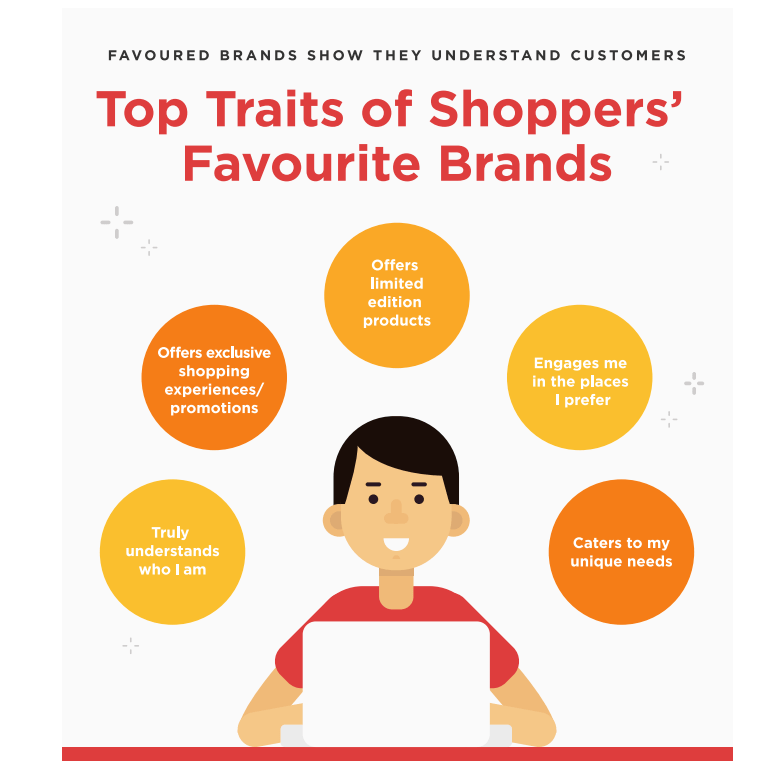What Every Malaysian Retailer Should Know

The Malaysian Digital Economy Corporation (MDEC) recently announced that it expects a 20 percent growth in ecommerce contribution to the digital economy in 2020. This is a positive sign for retailers as they start to reopen business. However, changes in customer behavior and competition for share of wallet will make capturing this growth more challenging.
To win sales and loyalty, retailers, brands, and online marketplaces must understand and navigate a complex ecosystem of consumer expectations, preferences, and channels. The third edition of Salesforce’s Connected Shoppers Report shines a light on some of the top challenges and opportunities for the sector by revealing what shoppers want most.
The report is compiled based on a survey of more than 10,000 global shoppers, covering:
• How retailers, brands, and online marketplaces can stand out in a crowded market
• The key drivers behind shopper loyalty
• How retailers can compete with emerging digital purchase points
• How the role of the physical store is evolving to meet new consumer demands
Read on for the key findings and what we think every retailer should know as they adapt for the future.
Online shoppers turn to a variety of digital storefronts
Online marketplaces such as Amazon, eBay, and Alibaba represent almost half (47%) of online shopping. This comes as no surprise given the popularity of Shopee, Lazada and Lelong in Malaysia. However, customers rely on a host of other digital channels for browsing and buying, including: retailers’ websites and apps; direct-to-consumer (D2C) websites and apps from brands; and WeChat, Instagram, Pinterest, and other emerging touchpoints.
The vast majority of shoppers (86%) buy from retailers, brands, and online marketplaces. So what makes them choose one option over another? The report revealed that shoppers are most likely to turn to retailer’s digital storefronts because of their seamless returns, superior customer service, and loyalty programs. Customers are attracted to brands that embrace D2C selling because of the uniqueness and quality of their products. When prioritizing price, shipping and fulfillment options, shoppers tend to buy through online marketplaces.
The top traits of shopper’s favorite brands
Any retailers without a loyalty program should consider creating one a priority. The Connected Shoppers Report revealed that nearly eight in 10 consumers are more likely to buy from brands with a loyalty program.
Consumers also want to feel understood and special. The top traits of shoppers favorite brands include catering to their unique needs and engaging with them in the places they prefer. Special merchandise and events are also important with more than half of shoppers drawn to brands and retailers that offer limited-edition or customized products (54%) or exclusive shopping events (51%).
Emerging digital purchase points
Brands can no longer rely on attracting consumers to their own physical and digital properties. Today, nearly one in 10 purchases occurs on emerging digital purchase points — channels completely separate from retailers’ and brands’ owned properties. These channels include social media, messaging platforms, voice assistants, and other digital destinations where consumers can go to get inspired, make purchases, and access customer service.
Gen Z, which makes up 26% of Malaysia’s population, is 3.5x more likely than the baby boomer generation to make purchases on these channels which suggests this way of shopping will become more popular over time.
The average consumer uses eight different channels today to communicate with companies*. What’s interesting is how these channels are used at each stage of the shopping journey. For example, search engines and social media feeds are popular during the discovery stage while the majority of shoppers still turn to channels like physical stores and websites
to transact. When it comes to service, traditional channels like phone are still common, but consumers expect a variety of options—including websites, apps and chatbots.
The future of the physical retail store
The role of physical stores is evolving, but the research from Salesforce shows that consumers continue to value the experience of visiting a store to discover and evaluate new products. In addition, in-store browsing is a big win for retailers with 62% of shoppers reporting that when they shop at a physical store, they tend to buy more than they initially intended.
Retailers can make the most of this opportunity by bridging the physical and digital worlds and using geolocation to send offers and promotions to shoppers’ phones once they’re in or near a store.
The research from Salesforce shows that fifty-five percent of shoppers like to receive location-based offers or experiences, but less than one-third say they’ve had such an experience. This shows many retailers are not yet meeting customers’ mobile expectations. More importantly, it shows there is a competitive advantage for those who can innovate fast and provide customers with what they want.
Demand for digital to grow in the new normal
COVID-19 is likely to accelerate many of these trends as it has driven more and more shoppers online. In fact, the Salesforce Shopping Index for Q1 showed 20% year on year growth in global ecommerce revenue. This represents a significant opportunity for retailers, but only if they can meet their customers’ needs online. This includes providing more seamless shopping experiences across a variety of channels and engaging them through highly personalized communication and offers.
As an authorized Salesforce Partner in Malaysia, Lava Protocols can help you write your success story with our 14 years of experience and over 200 customers across Asia Pacific. We can help you to leverage Salesforce technology to meet shoppers where they are and allow them to engage and transact on multiple channels.
*“State of the Connected Customer,” Salesforce Research, June 2019.
Lava Protocols is an authorized Salesforce Partner. Need a CRM Platform? Drop us an email to schedule your demo: hello@lavaprotocols.com.



